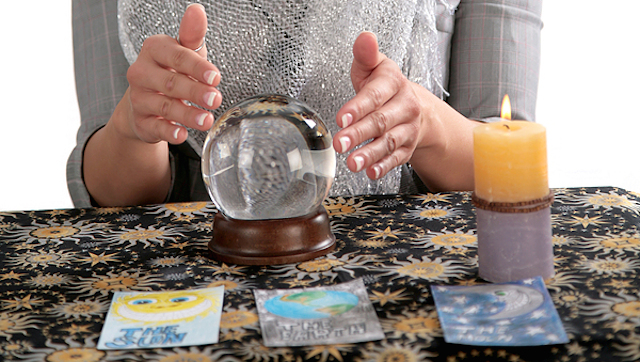Easy Tarot Card Layouts: Spreads for Beginners
Tarot layouts can differ greatly – and NOT MANY are practical when still learning…
When learning tarot cards, the most fun way is probably to read cards for yourself, but there is a problem. It’s pretty awkward to constantly go from cards to the book to review their meanings and back, or to remind yourself what particular position in a spread means.
These interruptions make you disconnect from your intuition.
Because of that, you want to start with easy layouts, with only several positions (or even one!) to interpret.
So, which simple spreads are recommended for beginners?
Card of the Day Spread
The easy way to begin is with single card readings. A fun way to do it is as “Card of the day” reading. Card of the day is most useful when looking for an inspiration, or as food for thought when you feel introspective.
Just shuffle the cards, and pull one card from the deck. Look at the card. Notice the symbols on the picture. Do any of the symbols grab your attention? If so, look closely at this symbol. For example: if it’s a ship, how does it feel to you? Is it arriving with news? Is it departing on a long and perilous journey?
Or, maybe it’s a person. What emotions does the person convey? Is the person turned towards you or in some other direction? Whatever. You get the point.
Note that it’s best not to “analyze” anything yet but to keep it fun. Just immerse yourself in beauty of the picture. You will immediately start to notice little details and get curious about them. Your imagination will automatically jump in to fill in the gaps.
Then, think about the meaning of the card. Look it up if you need to.
And finally, think how the card’s meaning relates to your day. Again, don’t investigate all the options. The first thing that comes to your mind is the one you are looking for. This is your intuition signaling you, and you better believe in it. Human species has been developing this fine mechanism for eons.
Now that you know both the meaning of the card and you have strong feeling what the reading is about, feel free to stop and think. Knock yourself out, if you want to. Whether the reading is about your emotions, about particular situation or about an individual, investigate them from the point-of-view the card provided for you.
Pros and Cons Spread
Another great spread for learning cards is the Pros and Cons layout. It’s only two cards; it’s quick, and it’s fun. One card represents good aspects of a particular situation and another card represents bad aspects. This spread can also apply to a role an individual has in your life at the moment, or it can be asked about a course of action you are considering taking.
Ok, let’s see how to do it.
First, decide on topic for the reading. For example: you can pick the problem that is bothering you, or something you think about much at the moment.
Then, form the question. Better keep it simple for now. Don’t use questions that demand yes/no answer. What questions are both simple and well-formed for this spread? For example: “Tell me more about X,” or “What should I pay attention to when dealing with Y?”
Now, shuffle the deck, and pick two cards. Put them one against the other so that any contrast immediately grabs your attention.
Look at each card’s picture; don’t check the cards’ meaning yet. Is there anything of notice? Again, no analytic thinking in advance. Let your subconscious signal to you about what is important. In other words, the first thoughts that come to your mind are precisely what your intuition is trying to make you pay attention to.
Check the cards’ meaning, and think how the cards relate to the question, and how do they relate to each other.
When the focus of the reading is clear to you, then start investigating further. Think about the question. Consider whether cards are suggesting a different point-of-view. Investigate your emotions regarding the question. The answer will start taking shape. Proceed with investigating even little details, if needed. Reading is “done” when you are confident you understand what the cards are telling you.
With both of above easy layouts, you can have fun and practice until you master the cards. You can read each of those two spreads for yourself, several times in a row, but don’t overdo it. If you feel, after several readings, you are reading the cards “mechanically,” then stop. Continue later, when your batteries are recharged!












Leave a Reply